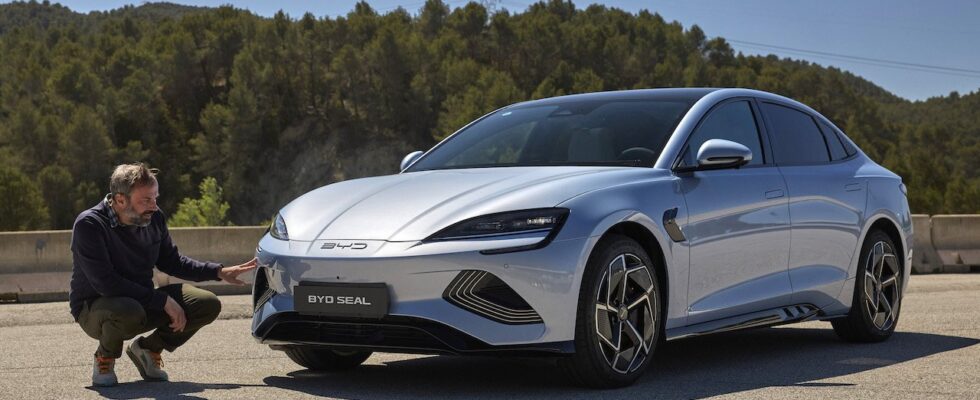The BYD Seal is the new electric car from the Chinese giant, world number 2 behind Tesla. This is an electric sedan that comes to hunt in the lands of the Tesla Model 3, but also its bigger sister, the Tesla Model S. It places itself between the two American cars in many aspects.
After getting our hands on the very affordable BYD Dolphin and trying out the BYD Atto 3, here’s our hands-on review of the BYD Seal.
Attention, misleading! While the silhouette of the BYD Seal gives an impression of compactness, nervousness, it is a big, very big car even… With 4.80 m in length, it is between the size of a Tesla Model 3 (which is itself small than for Americans) and a Tesla Model S. On the Old Continent, it is the size of a classic road sedan .
Technical sheetBYD Seal
| Model | BYD Seal |
|---|---|
| Dimensions | 4.8m x 1.875m x 1.46m |
| Power (horses) | 530 horsepower |
| 0 to 100km/h | 3.8s |
| Level of autonomy | 2 |
| Max speed | 180 km/h |
| Main screen size | 15 inches |
| Car side socket | Type 2 Combo (CCS) |
| Entry-level price | 60000 euro |
| Price | |
Product sheet |
This handling was carried out during a press trip organized by BYD.
Design: the child of a Model 3 and a TaycanBYD Seal
With a front end reminiscent of the visual signature of the Porsche Taycan and a slightly truncated Model 3 silhouette, one thing is certain, the Seal plays the sporty card, in the footsteps of the Ocean-X concept (2021) which gave a taste.
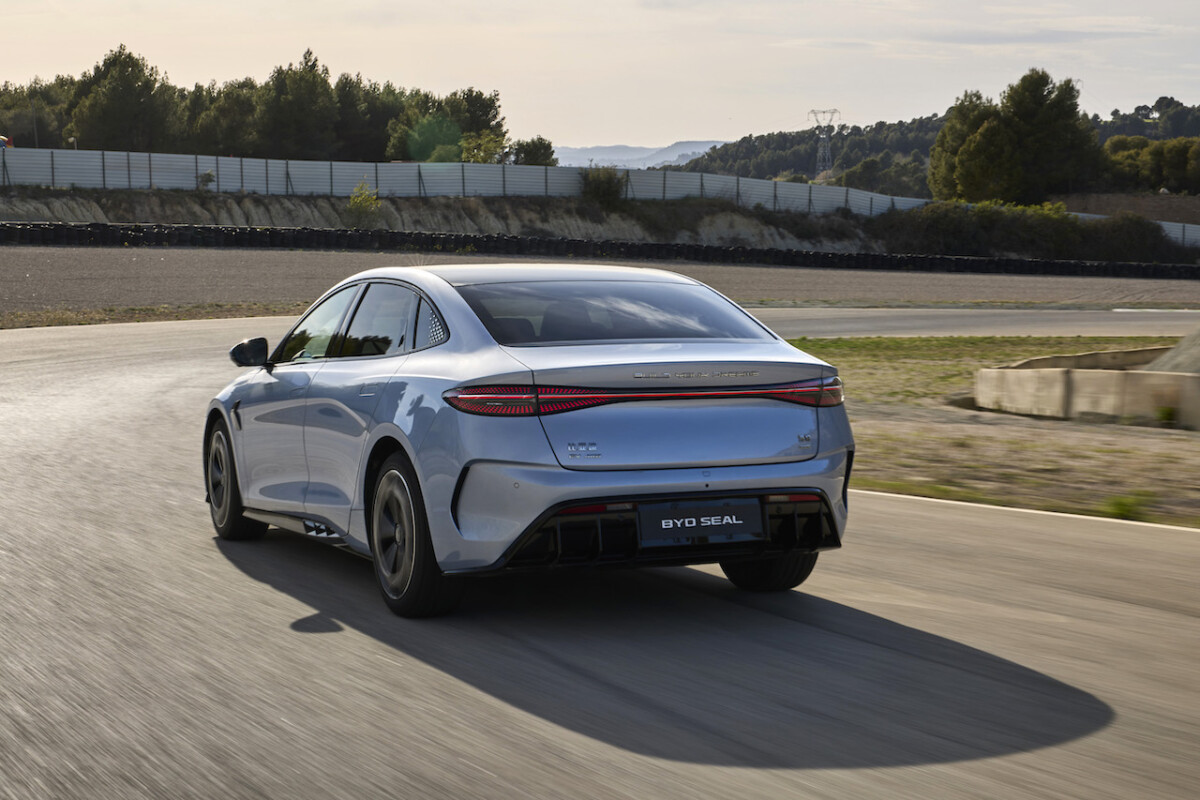
The Seal had been the surprise bonus of the BYD stand at the Paris show, demonstrating the ability of Chinese manufacturers to move away from classic SUVs to play a sexy score. And it is true that the fluid lines, the very sculpted hood, the nice aggressiveness and the sporty details of the Seal give it a great look.
We just regretted the “too much” side of certain attributes such as the rear quarter pins (chrome) or the LED lights (red) or the huge rear extractor, race car style… But if its real aerodynamic role remains to be proven , the remarkable aerodynamic drag coefficient (Cx) of the car, under 0.22, proves that designers and technicians effectively joined hands on this project.
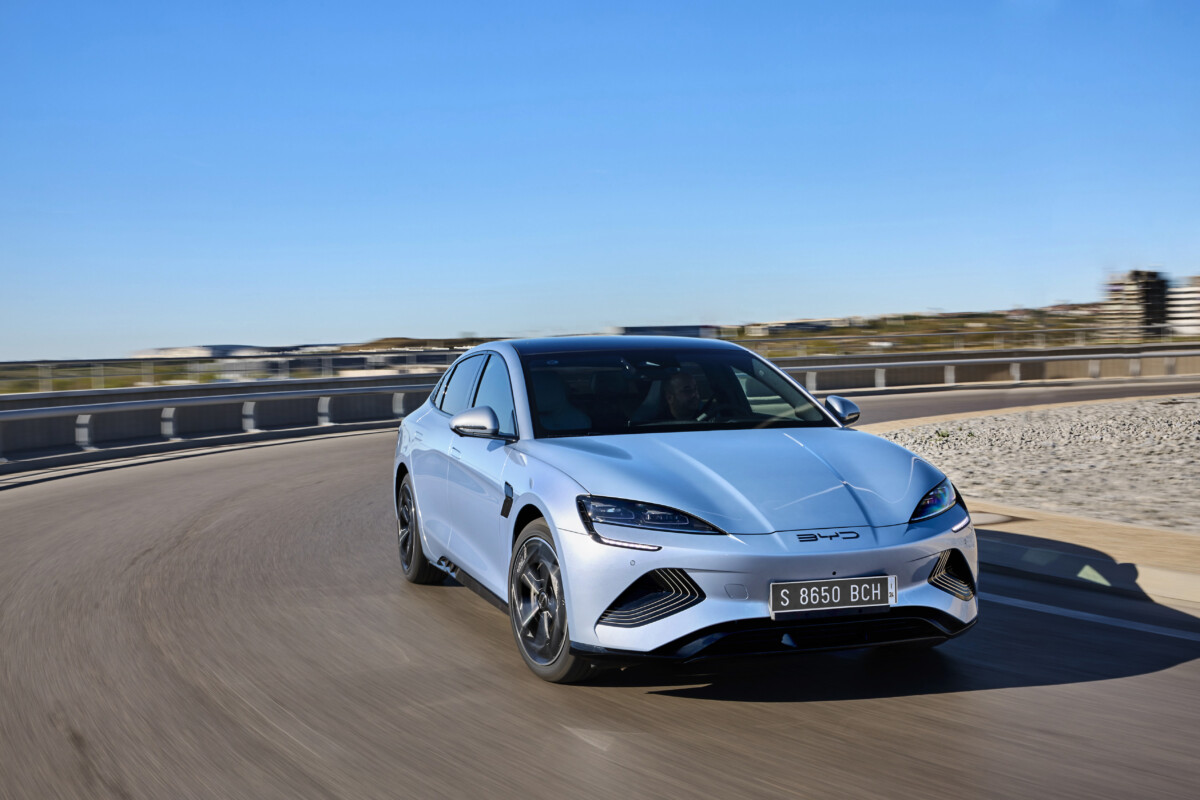
The 19-inch rims remain reasonably sized, which should help with comfort and efficiency. They are fitted with Continental SportContact 7 tires to ensure grip worthy of the performance of the car.
Habitability: sporty, but comfortableBYD Seal
Sitting behind the wheel, you immediately find yourself in an atmosphere close to the world of sports cars. The low driving position, well thought out to be comfortable, wedged into the integral bucket seats, the three-spoke steering wheel, the mixture of leather and Alcantara-style artificial leather, the small transmission selection lever and the close screens of the driver: everything is done to encourage concentration and put the driver in the mood.

The dashboard and the central console adopt fluid shapes, there are some storage spaces and two Qi wireless charging supports for two smartphones placed side by side, as with whoever you know… The materials seem very seriously chosen and well assembled on the models intended for the Chinese market that we were able to test.
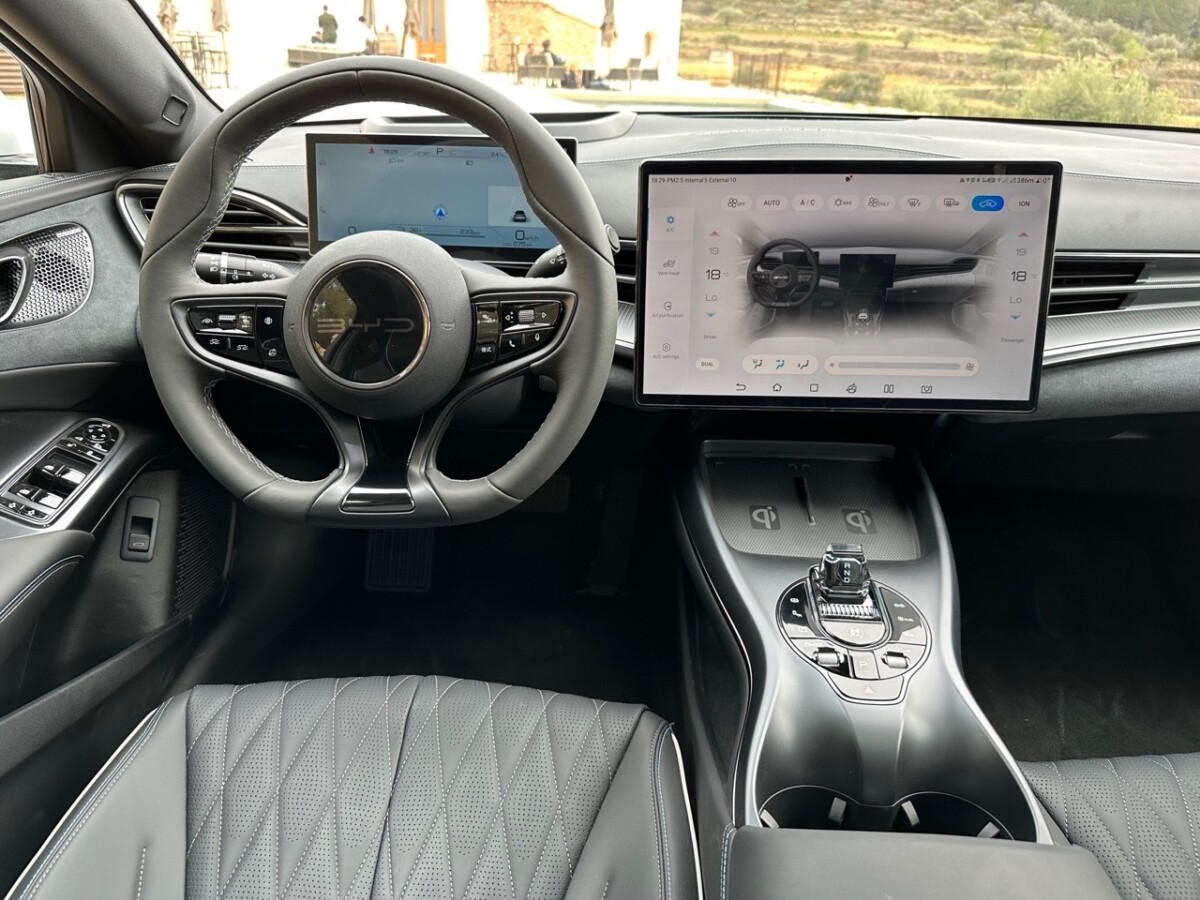
In the rear seats, space is surprisingly spacious and comfortable, thanks to a large wheelbase of 2.92 metres. The panoramic roof makes it possible here, as elsewhere, to combine the advantages of good light and higher roof clearance.
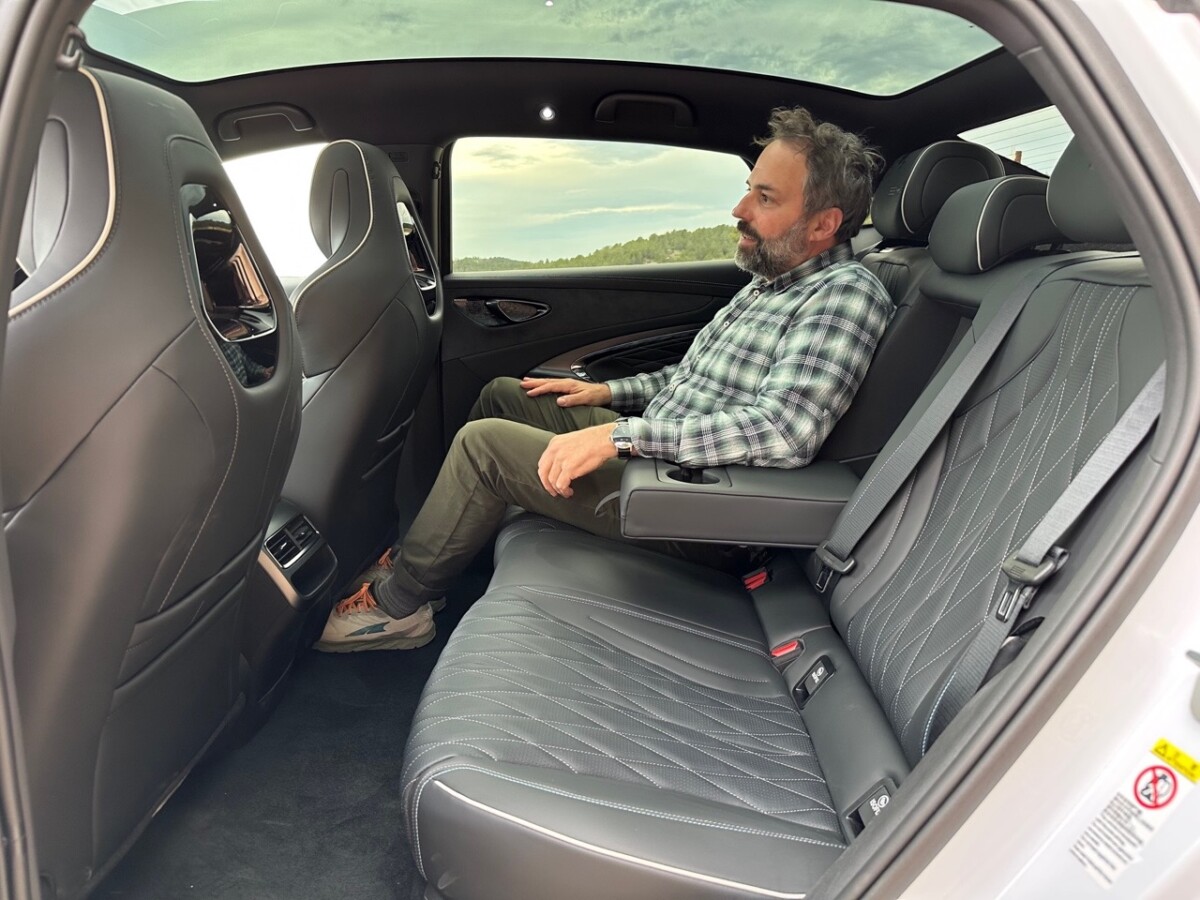
The sound system is provided by the high-end Hi-Fi brand Dynaudio, with no less than 12 speakers.



The 402-litre trunk is completed with a 53-litre compartment under the front bonnet.
Boot side, with a trunk of 402 liters + 53 liters under the front bonnet (frunky), the Seal does not forget to provide the necessary space for long trips even if it will not be the queen of its category on this side.
Infotainment: to be judged on partsBYD Seal
Chinese models oblige, the displays of the on-board systems of the demo cars that we have been able to see are not in line with what will be the infotainment offered here. Fortunately, because some very basic graphics do not look good. We have the impression of being in an overly refined form of Android Automotive.
On the other hand, certain functionalities are already known on models like the BYD Atto 3 and it will sometimes be necessary to delve into complex menus to find the setting you are looking for, such as for the air conditioning.

Fortunately, Apple CarPlay and Android Auto are on the program. Note the excellent 360° vision provided by the mesh of exterior cameras.


A specific graphic is set up when preparing to make an acceleration.
The driver is entitled to both a head-up display, a large instrument screen behind the steering wheel and a 15.6-inch central screen which has the particularity of being pivoting, as in the other models of the range. So former Model S customers will be able to find the horizontal or vertical configuration that will remind them of the generation they knew…
Driving: leading performanceBYD Seal
The first exercise that is proposed to us to get a first impression of the Seal is a good old acceleration from 0 to 100 km/h, as the Americans love it so much (even if they stop at 96 km/h, miles per hour oblige). At this stage, we need to unfold the technical sheet of this ambitious car.
Two versions are on the program, with a single rear engine of 313 horsepower and 5.9 seconds from 0 to 100 km/h, or two engines accumulating 530 horsepower and 670 Newton-meters of torque for maximum performance, with just 3.8 seconds from 0 to 100. It is naturally this last version which was given to us for this exercise, always impressive, but from now on already seen. Strangely for a car of this style, in both versions, BYD decided to cap the top speed at 180 km/h.
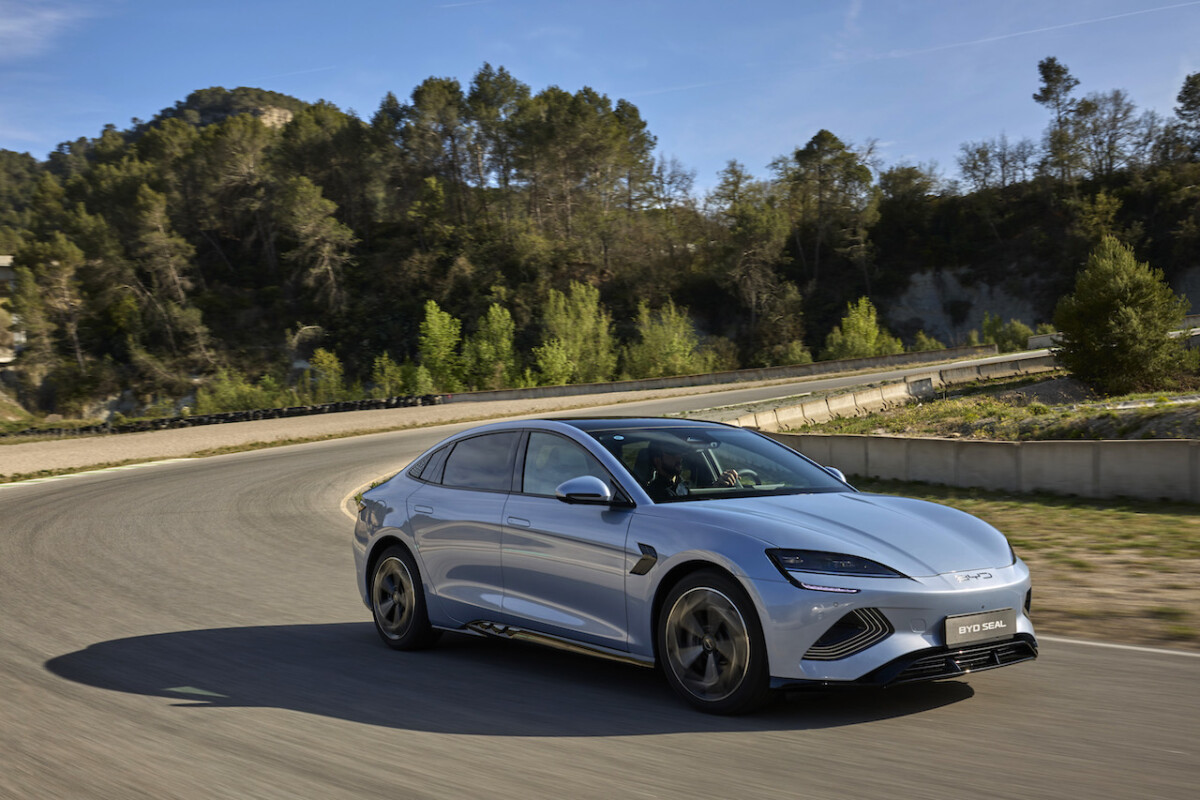
The second exercise takes the form of a gymkhana and a short photo session, well seated in the buckets holding the front passengers. We will have to wait for the start of the 2023 school year and the real tests to form a real opinion, but what appeared to us in this brief tour of the carousel is the very direct side of the controls, with a good feeling and controlled damping of the firm type, which seems well controlled to offer good efficiency.
Despite a certainly high mass with the 82 kWh battery, the Seal struggles with efficiency by slaloming between the blocks, and it offers a good feeling of braking.
Autonomy, consumption and chargingBYD Seal
Little information is given at this stage, but here is what we do know: the Seal is based on the e-Plaform 3.0 which integrates the Blade LFP battery from BYD into its structure. With a capacity (useful, a priori) of 82 kWh, it allows a approval at 520 km of autonomy on the WLTP mixed cycle for the twin-engine version, and 570 km for the propulsion version.

For charging, it relies on an 11 kW on-board charger, and in DC fast charging, it can receive a power of only 150 kW maximum. As a result, it goes from 30 to 80% charge in 26 minutes. We have seen better, especially with the new Tesla Model Y Propulsion equipped with a BYD battery which goes from 10 to 80% in approximately 20 minutes.
Note that it is possible to connect external electrical devices to the Seal thanks to its two-way V2L charging function with a maximum power of 3 kW, and that a heat pump is part of the standard equipment to avoid too much reduce range in winter.
Price and availability: the great unknownBYD Seal
Expected at the start of the school year, the Seal has not yet delivered its European prices. Looking at BYD’s pricing policy, it’s hard to make a prediction as the Atto 3 seems more like middle of the pack against more established brands here, while the BYD Dolphin aims for a more aggressive positioning.
For the Seal, a top-of-the-range sports car, managers specializing in pricing have to tie themselves in knots in the face of an increasingly aggressive Model 3 in terms of price. Because if it is cheaper than a basic Model 3 in China, with the prices charged by Tesla here (from 41,990 euros today – we must remain cautious), it will be hard to follow because it is less than the much more modest BYD Atto 3…
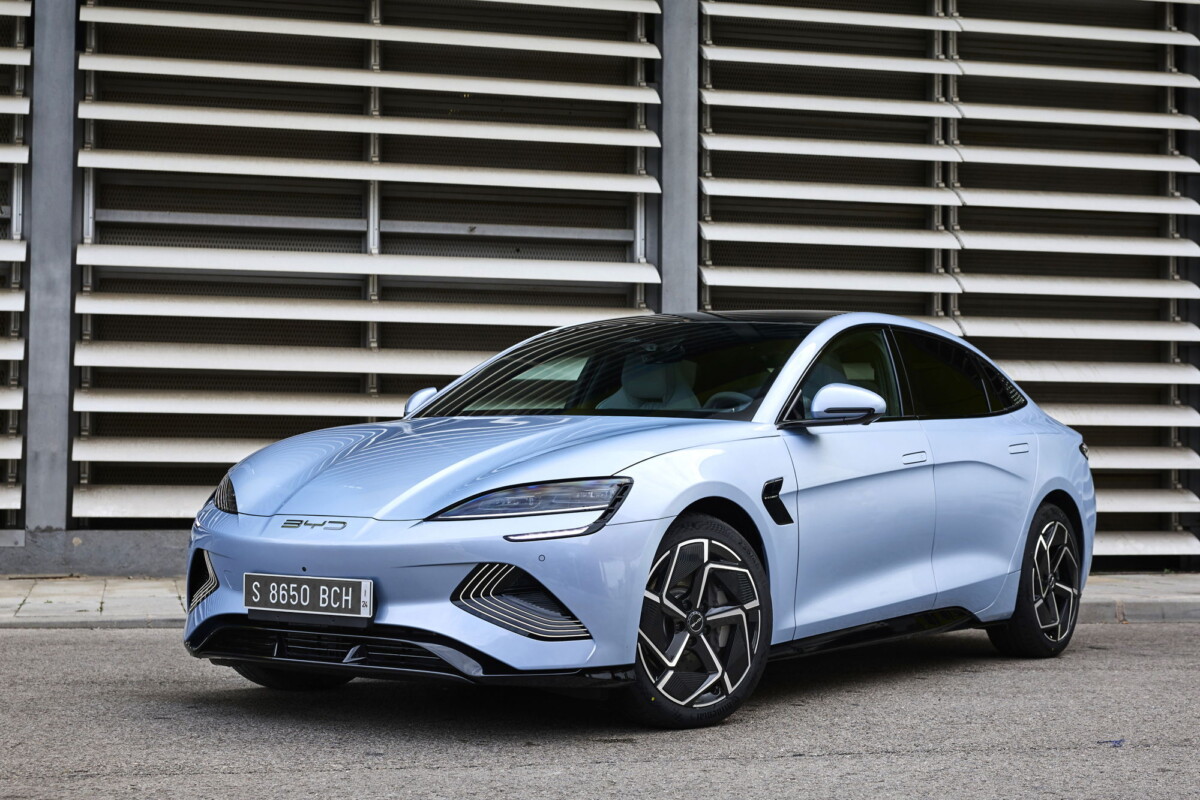
To stand up to the BMW i4 and Hyundai Ioniq 6, the Seal could be positioned around 50,000 to 60,000 euros depending on the version, which seems to be quite realistic and cheaper than the BYD Han. But time will tell if that’s the case…
